MLB Team X-Factors for 2017, Part IV: NL East

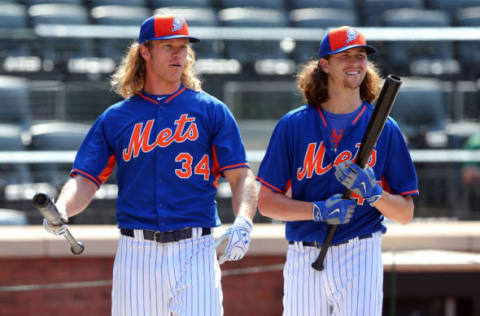
After taking a week off to determine the Most Interesting Man in Baseball, we’re back to looking at the one player who will be the biggest x-factor for each MLB team in 2017. We already conquered the American League, and with less than a week until Opening Day, this week we’ll cover the National League.
The Senior Circuit has won five of the seven World Series this decade, thanks in large part to the do-we-call-this-a-dynasty San Francisco Giants. The Giants have won three of the seven titles this decade, and when added to the 2011 St. Louis Cardinals and last year’s historic Chicago Cubs, they give the league its five rings in seven.
Of course, the Giants play out west and today we’ll be taking a look at the five teams from the National League East. The East is an interesting division. The last five years have seen four different division winners (sorry, Miami Marlins), and after a decade of Atlanta Braves dominance (1995-2005) and a half decade of Philadelphia Phillies dominance (2007-2011), no one team has settled into the role of division bully.
The Washington Nationals seem on the precipice of this distinction, and if they win the division in 2017 it would give them three of the last four NL East titles. However, the club has plenty of questions ahead, especially regarding their top players (Is Bryce Harper destined to be wearing pinstripes in 18 short months?). The top challengers to the Nats would seemingly be the New York Mets, but it seems like they have scary pitcher news two to three times a week these days.
In recent years, it has been a bit of have-and-have-nots in the division, as the Phillies, Braves and Marlins have been more in the rebuilding phases of their franchise. The Braves look to be making moves this year, though, as they open their new stadium with a glut of veterans added to their young core. The Phillies have as fun a roster as you’ll find in baseball, now it’s a question of whether that core can get them enough wins to be relevant in 2017. And the Marlins? Who ever knows with the Marlins.
One thing is for sure, it’ll be fun to watch. Let’s meet the x-factors for the NL East.
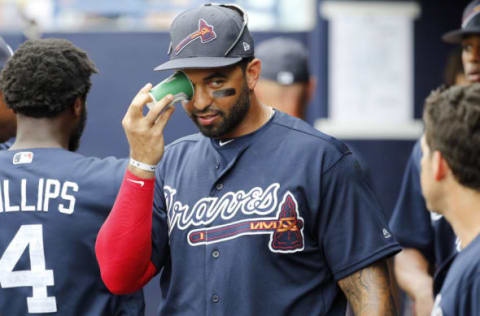
Atlanta Braves – Matt Kemp
There’s a bit of buzz surrounding the Braves heading into 2017. After three seasons of wandering the playoff-less desert, the Braves move into their new stadium with the potential to surprise a few folks. The club added veteran pitchers R.A. Dickey, Bartolo Colon and Jaime Garcia over the offseason, giving them a rotation that looks surprisingly competent. Led by Julio Teheran and brought up by Mike Foltynewicz, there’s young talent and veteran ability top to bottom.
Where the Braves could really make some noise, however, is with the bats. This stat was batted around a bit in 2016, but it’s been a long offseason, so here’s a reminder: In the second half of the 2016 season, the Braves posted the fourth-best offense in baseball, per wRC+.
Freddie Freeman was absolutely lit in the second half (177 wRC+), but the addition of Matt Kemp at the trade deadline also played a key role in the jump the Braves offense made from the first half of the season (30th in wRC+). The Braves were able to get Kemp for a relatively low price (prospect Hector Olivera) because the San Diego Padres were simply trying to move on from the massive contract they agreed to take on after the 2014 season.
Considering the strange money allocations that went along with the trade (MLB Trade Rumors makes it a bit clearer here), Kemp was more than worth the trade for Atlanta down the stretch in 2016. The 32-year-old ex of Rihanna slashed .280/.336/.519 in 56 games for Atlanta, good for an OPS+ of 126. The Braves were 30-26 over that stretch, a 162-game pace of 87-win team – right around the playoff zone.
If they want to reach those heights in 2017, Kemp will need to not only continue to hit like he did in Atlanta last year, he’ll also have to be something less than the defensive sieve he has turned into in recent seasons. Despite all that hitting in Atlanta, Kemp’s defense was so bad that he was worth precisely nothing overall (-0.0 bWAR), at least according to Baseball-Reference. That seems a bit harsh, but with no DH spot to hide Kemp, we’ll get a chance to see if he can bounce back from the recent trends in his defense. This defensive challenge, along with needing to keep hitting in the middle of the order, will be key for Atlanta in 2017.
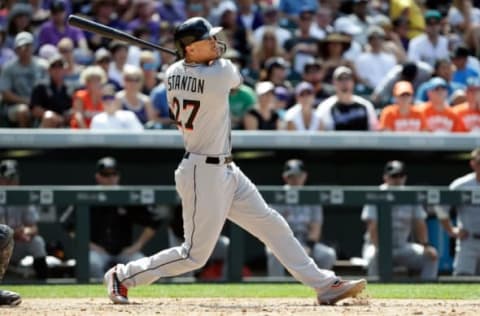
Miami Marlins – Giancarlo Stanton
With some of these picks (Mitch Haniger, Aaron Judge) it’s fun to go for some less obvious names. Guys who are at the big league level but might not be the name you first think of when you hear the team’s name.
That’s not the case in Miami. In Miami, the case is clear: If The Mighty Giancarlo Stanton stays healthy, they will have a chance to linger around the fringes of the playoff picture; if Stanton spends an extended period of time on the disabled list (or battling through injuries that sap him of his power), there’s not much hope for them.
Stanton recently turned 27, and in his seven seasons in the big leagues has never played more than 150 games. In fact, in five of those seven seasons, he has failed to top 123 games played. For a player who has been worth 5.7 bWAR/650 plate appearances over the course of his career, that’s obviously a big caveat.
The power has never been in question for Stanton. In his rookie season, Stanton launched 22 home runs in 100 games and topped .500 with his slugging percentage. In doing so, he became the first 20-year-old to slug .500 in a season (min. 100 games) since Alex Rodriguez. Before A-Rod, you have to go back to 1965 (Tony Conigliaro) to find another such player.
With such a high bar set, one could make the case that Stanton has been a bit of a disappointment since. (That kills me to say, since Stanton is either my favorite or second-favorite player in baseball right now.) He had a monster 2014 season (37 HR, 6.5 bWAR, second in MVP), but he’s never really had that season we thought he might be capable of. You know, that season where he hits 50 home runs, drives in 120 and is worth somewhere in the vicinity of 8.0 WAR. With the Marlins not looking like the most viable contenders this season, that season might be the only way the club breaks their playoff drought, which has quietly reached 13 years – second-longest in MLB.
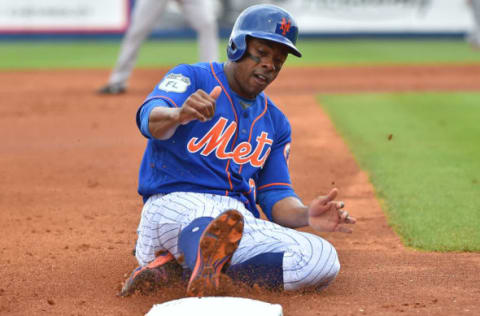
New York Mets – Curtis Granderson
Yes, the biggest question marks for New York lie in the pitching rotation. I’m probably overthinking this whole thing and should have just put Jacob deGrom or Matt Harvey (or Steven Matz or Noah Syndergaard or Zack Wheeler or any recovered/potential-to-be-injured starter), but that seemed to obvious. Since we just chose Giancarlo Stanton – the most obvious player on the Marlins – I figured it was time to zig right when you thought I’d zag.
If the rotation has 99 questions (but a Gsellman ain’t one), the Mets outfielder has 75 or so questions of its own. As of right now, the Mets seem likely to throw Yoenis Cespedes in left field, Jay Bruce in right field, and Curtis Granderson in center. That leaves Juan Lagares as the late-inning defensive specialist and Michael Conforto as S.O.L. on the bench (or in Triple-A) once again. Granderson began his career as a center fielder and was pretty good in his prime, netting 6.3 dWAR over his first seven seasons in the big leagues, spent mostly in center field. However, that value was mostly derived from his speed, as his ability to read a ball off the bat and throwing arm were never very strong.
Now that he’s 36 years old, a bit of that luster has worn off his defensive abilities. Granderson has spent only 78 games in center field over the past four seasons, and all the defensive metrics have him as a negative value when he has been there. Despite being as handsome as ever, Granderson has simply lost a step and can no longer get by on his speed alone in one of the more challenging defensive spots on the field.
That said, the Mets can’t move the corpse of Jay Bruce to center, and they prefer to keep Cespedes in left where his arm is more useful and he can’t get turned around on his funky routes to fly balls as often. Lagares is a stud in center, but he has a wRC+ of 85 for his career and it would be a slap in the face to a respected veteran (Granderson) to be relegated to bench duty.
For now, the Mets will have to hope that Granderson can remain at least respectable enough in center field until either A) an injury forces their hand or B) an opposing GM enters a fever dream and decides that trading for Jay Bruce is a good idea.
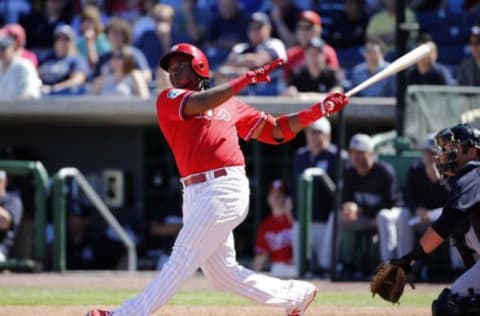
Philadelphia Phillies – Maikel Franco
To paraphrase one of my favorite films of all time:
“Look up x-factor in the dictionary, you know what you’ll find?”
“A picture of Maikel Franco?”
“No, the definition of x-factor, which Maikel Franco [bad word] is!”
All jokes aside, Franco is an extreme example of a high variance player who could do a lot to determine both the long-term and short-term goals for the franchise. Not that there’s any pressure on you or anything, kid.
Franco burst onto the scene as a 23-year-old in 2015, clubbing 14 home runs with an OPS+ of 130 in half a season. He played a premium position (third base) and was a bastion of light at the end of the tunnel for a Phillies franchise thirsty for any sign of a happy future.
Cut to March 2017 and things are a bit different. The Phillies actually have a relatively bright outlook, but instead of being thanks to Franco, it is thanks to an awesome young rotation that looks like it could have as many as two or three aces in a few years. As for Franco, he hit 25 home runs in 2016, but he was also all over the map throughout the season, seeing his strikeout rate increase, his walk rate decrease, and he went through numerous slumps throughout his sophomore campaign. His batting average dropped 25 points and, even more worrisome, his slugging percentage dropped 70 points.
Now the interesting part of that drop: His underlying numbers were nearly identical.
| LD% | GB% | FB% | HR/FB% | Pull% | Soft% | Hard% | |
| 2015 | 18.2 | 47.0 | 34.8 | 15.9 | 44.7 | 22.1 | 28.5 |
| 2016 | 20.0 | 44.5 | 35.5 | 14.7 | 45.5 | 21.5 | 30.7 |
Franco’s line drive rate and fly ball rate actually improved in 2016, while his ground ball rate dropped. His hard hit ball rate went up while his soft hit ball rate dropped. Sure looks like a lot of those 2016 struggles were due to bad luck. Now Franco still posted a higher soft hit ball rate than Phillie fans would like to see, but it would not at all be surprising to see Franco take a big step forward in 2017, something close to a 4.0-win player is totally reasonable. If you add that to the aforementioned young core of pitchers and some of the other young hitting talent (J.P. Crawford, Odubel Herrera, Tommy Joseph) and you have the start of something really interesting in the nation’s first capital.
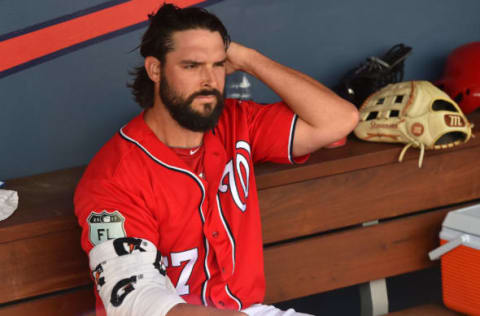
Washington Nationals – Tanner Roark
That’s right. On a team with Bryce Harper, Max Scherzer, Stephen Strasburg, Trea Turner, Daniel Murphy, and Adam Lind (wait, why are you laughing) I chose a 30-year-old with a career xFIP of 3.96 as the x-factor for 2017. It is precisely because of the star-heavy nature of Nationals that Roark is so important.
More from Call to the Pen
- Philadelphia Phillies, ready for a stretch run, bomb St. Louis Cardinals
- Philadelphia Phillies: The 4 players on the franchise’s Mount Rushmore
- Boston Red Sox fans should be upset over Mookie Betts’ comment
- Analyzing the Boston Red Sox trade for Dave Henderson and Spike Owen
- 2023 MLB postseason likely to have a strange look without Yankees, Red Sox, Cardinals
Throughout baseball history we have seen time and time again that baseball is the truest team sport (soccer is the only other sport that can come close). In basketball, if you have LeBron you will be an elite team. In football, if you have Peyton Manning in his prime you will be an elite team (why, yes, I am a bitter Pats hater, why do you ask?). In baseball, though, you can have Mike Trout and still miss the playoffs four of his five professional seasons. Heck, you can have Eddie Murray, Cal Ripken and Jim Palmer on your roster and miss the playoffs entirely (1982 Baltimore Orioles).
That’s why players like Roark (and Adam Eaton and Jayson Werth et al.) are so important. Malcolm Gladwell would describe the sport as a weak-link sport. Having those weak links can kill you. It’s why the “stars and scrubs” strategy so often fails in baseball.
Thus, Roark – and his career 3.96 xFIP – are of the utmost importance if the Nationals want to break through and reach the promised land in 2017. This franchise is working on a possible deadline (I could link to 40,000 different “Will Bryce Harper leave after 2018 articles here), so each season is under the microscope.
Next: X-Factors for the AL East
With Scherzer coming into 2017 with a minor injury, Strasburg always on the precipice of injury, and Joe Ross currently getting injured putting on a t-shirt, Roark’s stability will be needed for this rotation to be successful this season.
In 2014, Roark threw 198.2 innings and was worth over 3.0 fWAR – the team made the playoffs. In 2015, Roark threw just 111.0 innings and was worth -0.2 fWAR – the team missed the playoffs. In 2016, Roark threw 210.0 innings and was worth over 3.0 fWAR – the team made the playoffs.
Say what you will about correlation and causation, but Roark’s importance to this club can’t be overstated.